So currently I'm a bit obsessed with POWER. Yes so obsessed that every time I write the word, it has to be in capital letters. Every time I say the word I have to talk like Jeremy Clarkson off of the TV

But this is not power created from any kind of combustion process. This is power produced by my legs in order to push my currently overweight arse along on my road bike.
POWER measurement is ultimately the best way to see how well you are progressing in terms of getting fitter on your bike. Speed is all well and good but is very dependent on such things as terrain, elevation, and weather conditions. The wind slows you down a lot, as does going up hills. On a calm day, you can do a 20 mile route in an hour, but then on a windy day you can do the same route and it will take a lot longer. You can never gain that average speed back that you lost climbing the hill when you come down it for some reason (there is some math's behind it). The only real constant is how much POWER you are putting through the pedals. It doesn't matter if you are riding into gale force 10 winds, or cycling up a grade 1 incline, you will still put down a level of POWER that you can compare with previous values. So how do you measure this mysterious value.....
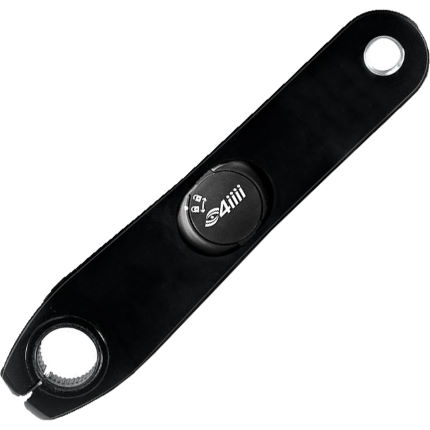
Power meters
There are a couple of different types of power meters; pedal power meters and crank power meters. Each measures the number of watts you are pushing through the drivetrain of the bike. I have a cheapish 4iii crank power meter which sits between the pedal and the front chainring. This is a one-sided affair and only measures the amount of power I'm pushing through my left leg. It does that by basically measuring how much the crank is bending. One-sided is cheaper and perfectly good for an amateur rider like me. With two-sided ones you can see if you are more powerful in one leg and it can help you squeeze out a few extra watts by adjusting your technique.
Cycle Computer
So the next step is how you record the data coming from your power meter and for that, you will need a cycle computer. I guess the two main choices are a Garmin and a Wahoo. I have a Wahoo ELEMNT
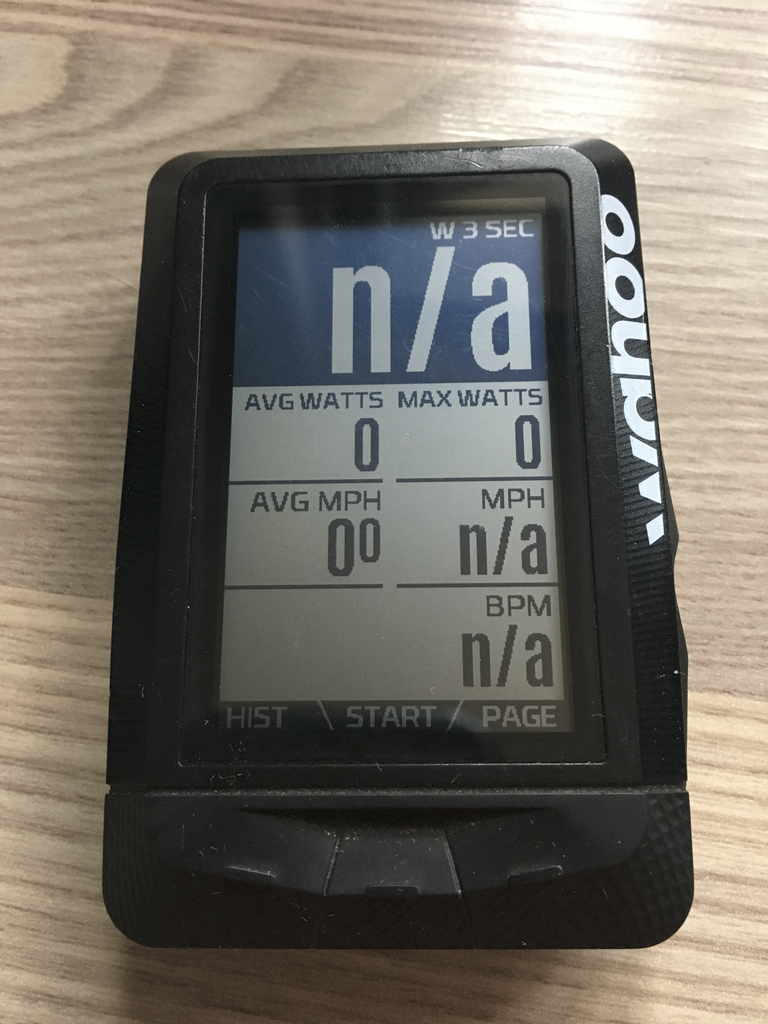
So as you cycle, the computer records your POWER output every step of the way. On this screen I have a 3-second watt average amongst other things - a 1-second view is too "jerky" and it's hard to see exactly what you are putting out. Once you get that juicy data, you have to make use of it and digest it. This is where the fun starts.
Apps
I use a few apps for stats and visualizations, but only 2 really do anything with power values. Strava (which nowadays is just a pointless social network for fitness people and provides virtually no useful data really. I just use it to see what my mates are up to) and Xert. Let's go through them one by one. Data is synchronized from the bike computer to these apps automatically.
Strava
Here is what you get with Strava in terms of POWER. I do use some Strava plugins which give you a bit more information on power stats, but not a lot. The main useful ones here are the Weighted Avg Power of somewhere between 230 and 235 watts and the 20-minute power of 230 watts. A pro cyclist is going to be putting out about 400 watts on a 1 hour average so I'm quite a way off that. This time last year when I was at my fittest, I was doing about 250 watts on my 20-minute average. I have only been back on the bike for just over a month so I am slowly getting my POWER back.


Xert
There is something in cycling called an FTP test. This stands for "Functional Threshold Power" test and is used to measure the average POWER in watts that someone can sustain over a period of time, usually 1 hour. Taking one of these tests is really quite painful. I've done a couple of 20 minute FTP tests and they were bad enough. If your FTP goes up, you are getting fitter, but who wants to do one of these torturous tests every few weeks? Not me for sure. That's where Xert comes in. This app cleverly measures your POWER over time, based on your normal day to day rides, and works out what it thinks your POWER limits and parameters are. It also helps you to train by setting targets and creating workouts that you can import into apps like Zwift, a virtual on-line cycling app, or Trainerroad. The way it does this does take some getting your head around

Xert keeps a record of what it thinks is you "Max POWER Available" or MPA. That is shown as the dark blue line on the graph above. As you use energy on your ride, your MPA decreases as you get tired - your legs run out of power slowly. The red line below shows the power you are using at a specific time during the ride. When the power you are using goes above the MPA value, Xert thinks, "OK, he is using more power than he should have available to him", flags this as a BREAKTHROUGH! and pushes up what it thinks your maximum power is for next time.
After a few weeks of riding, it actually gets a really good idea of what your max power should be and how much power you should have available over certain time periods

So this is a capture of my current stats on Xert. It estimates that my 1-hour threshold power is 229 watts. That means it thinks I can put down 229 watts of power for an hour before I have nothing left. That sounds about right as my last ride averaged at about 220 watts and I felt very close to death at the end.
The other cool thing with Xert is that it has an integrated trainer program or "Adaptive Training Advisor". You can set a target as to what
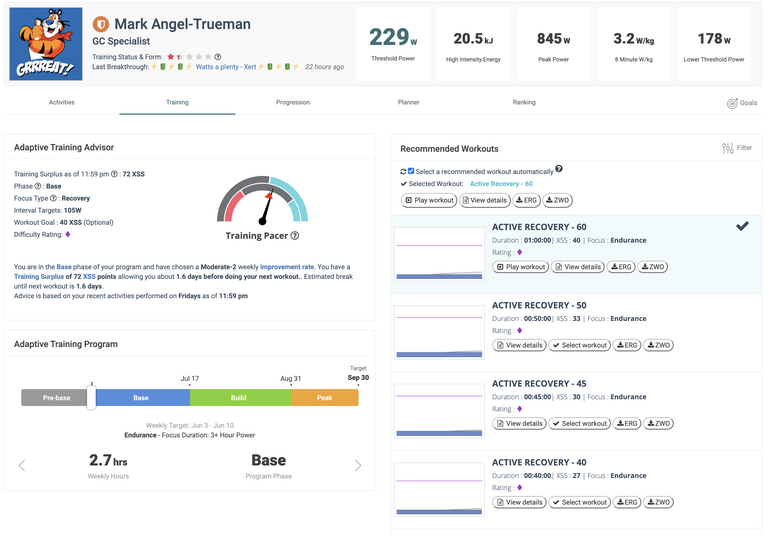
This is complicated shit. Basically you can set a target date (Sept 30 for me) and a level of improvement that you want to try to get to (Moderate for me) based on the type of rider you want to be (Endurance). It then uses it's own internal Xert Strain Score points system to calculate how you have been doing on rides and what you need to do to meet your targets. It also suggests workouts that you can do to help meet those targets.
As you can see, I need to take 1.6 days before my next workout but I could do an active recovery workout with a low XSS score if I wanted to. I can generate a workout from this page from the workouts on the right. If I want to do one of those I will normally import it into Zwift.
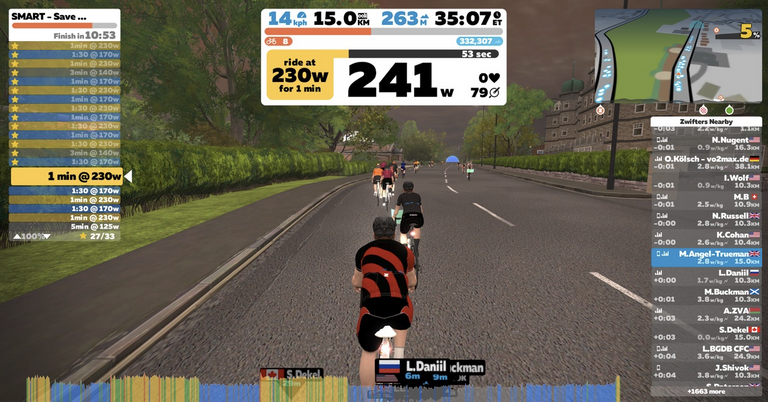
Zwift can monitor the output from my power meter and tell me what power to ride at to match with the planned workout. You can also get smart trainers that automatically adjust the resistance as you ride on Zwift. I might buy one for myself as an early Xmas present. Zwift is great if you cant get outside. They have loads of cool events and courses to ride.
Here is a snapshot of my power values since I got my power meter last year. The top value of this graph is 250 watts, which is what I was putting out last year. You can see that I haven't cycled much from the end of last year up until about 6 weeks ago where my power was down at around 160 watts. I've made massive improvements and am not far from getting back to my top level of fitness.
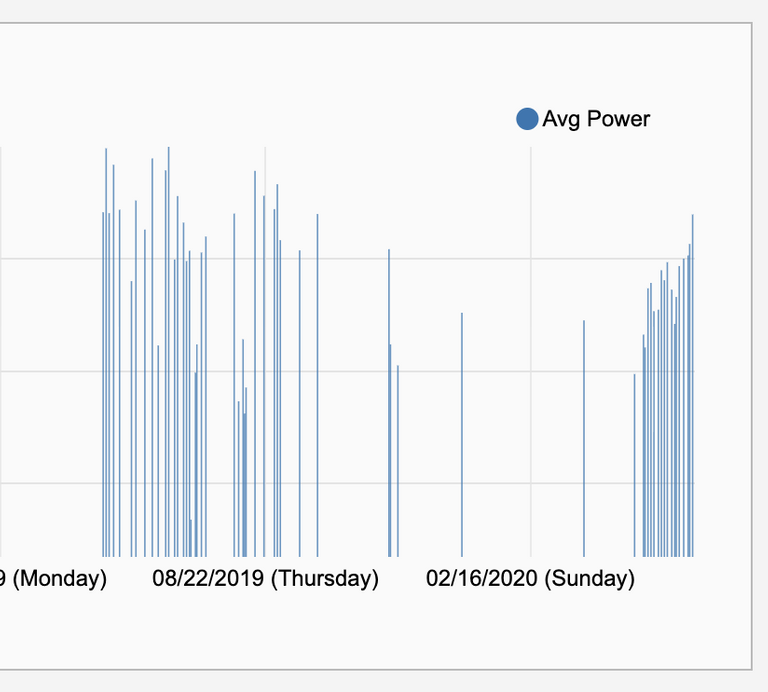
If you are interested in cycling, a couple of other useful apps are
https://ridewithgps.com/ - for excellent route planning
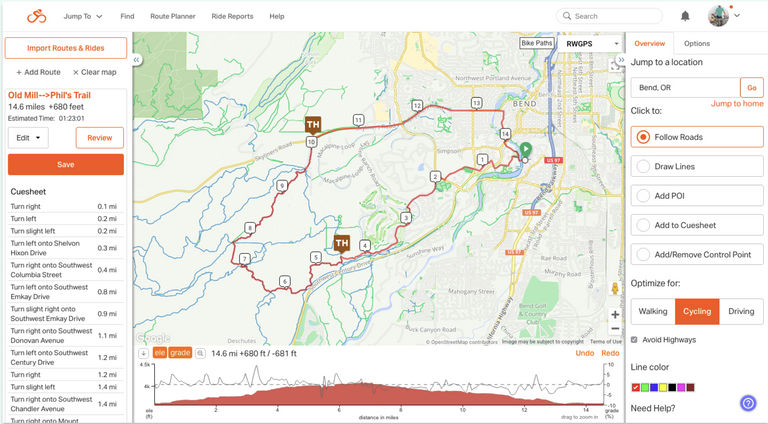
https://veloviewer.com/ - for more stats than you can shake a stick at. Shame that it uses Strava as a base for its stats - you now have to pay for segment data.

If anyone wants to chat bikes/cycling, drop me a message. Maybe it would be good to have a cycling community on here as I don't think there is one specifically
Ride on
Mark
Wow, you've just opened up a whole new dimension to my biking. Your idea for a community sounds great!
Wow nice. I'm a cyclist having been a messenger in the past and toured much of SE Asia and other parts of the world as well. I'm so low tech that I don't even take my phone with my cycling normally haha but I can respect the love of tech and the desire to push yourself. Sometimes people ask me technical questions about distance and time of my rides and I tell them I don't even know what time it is. I'm just out there for having a nice time. However, it does still irk me if I get passed on my rides but maybe that's the price I pay for not caring about speed? I pass my share of riders as well... When on tour I do like to calculate my speed and distance at the end of the day and add it up at the end of the tour. Nice to see how far we can go :) For me power is about weight to power ratio. Luckily, I'm blessed with a skinny cyclists body so great for cycling although sometimes not so in common society...